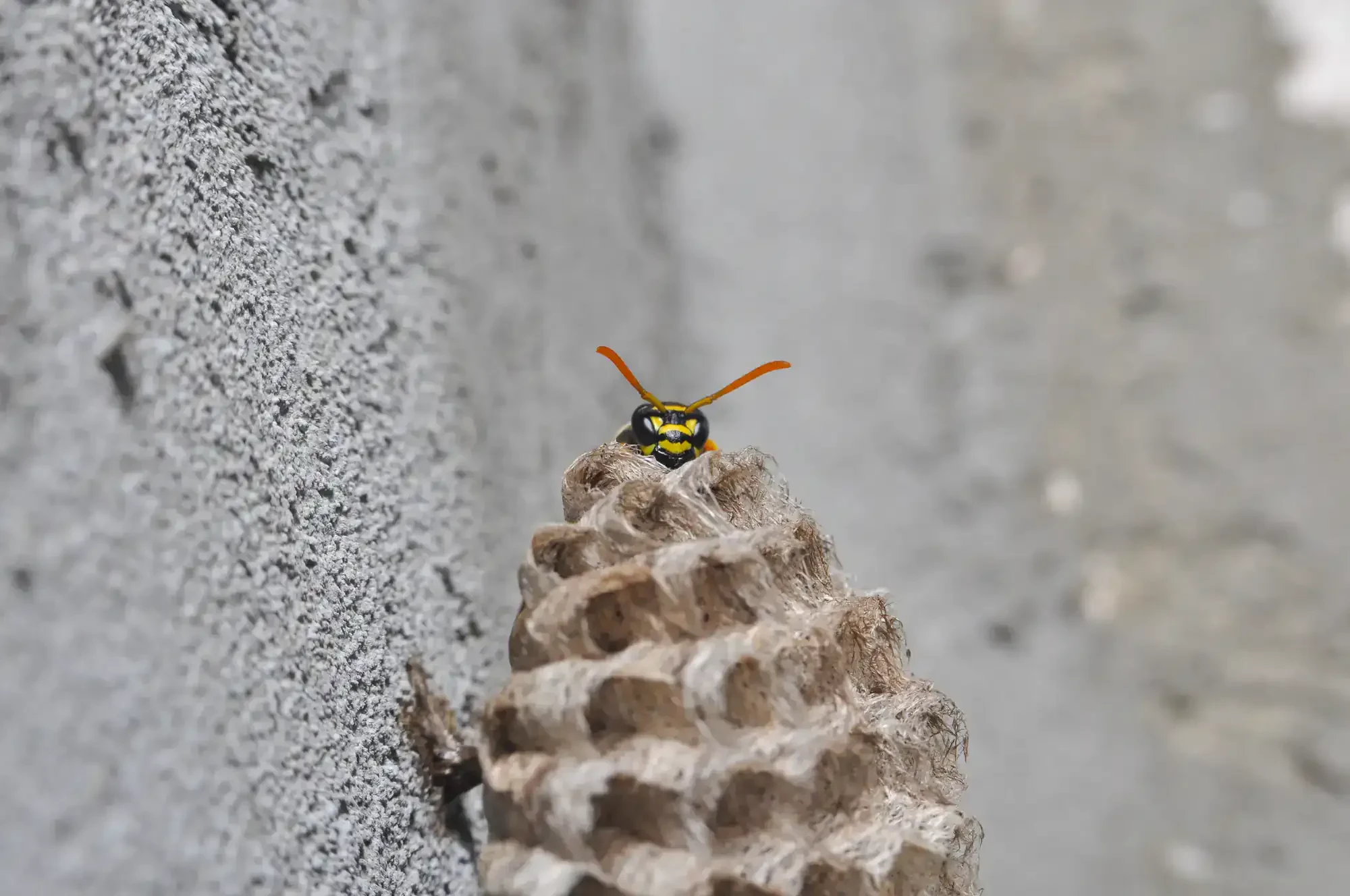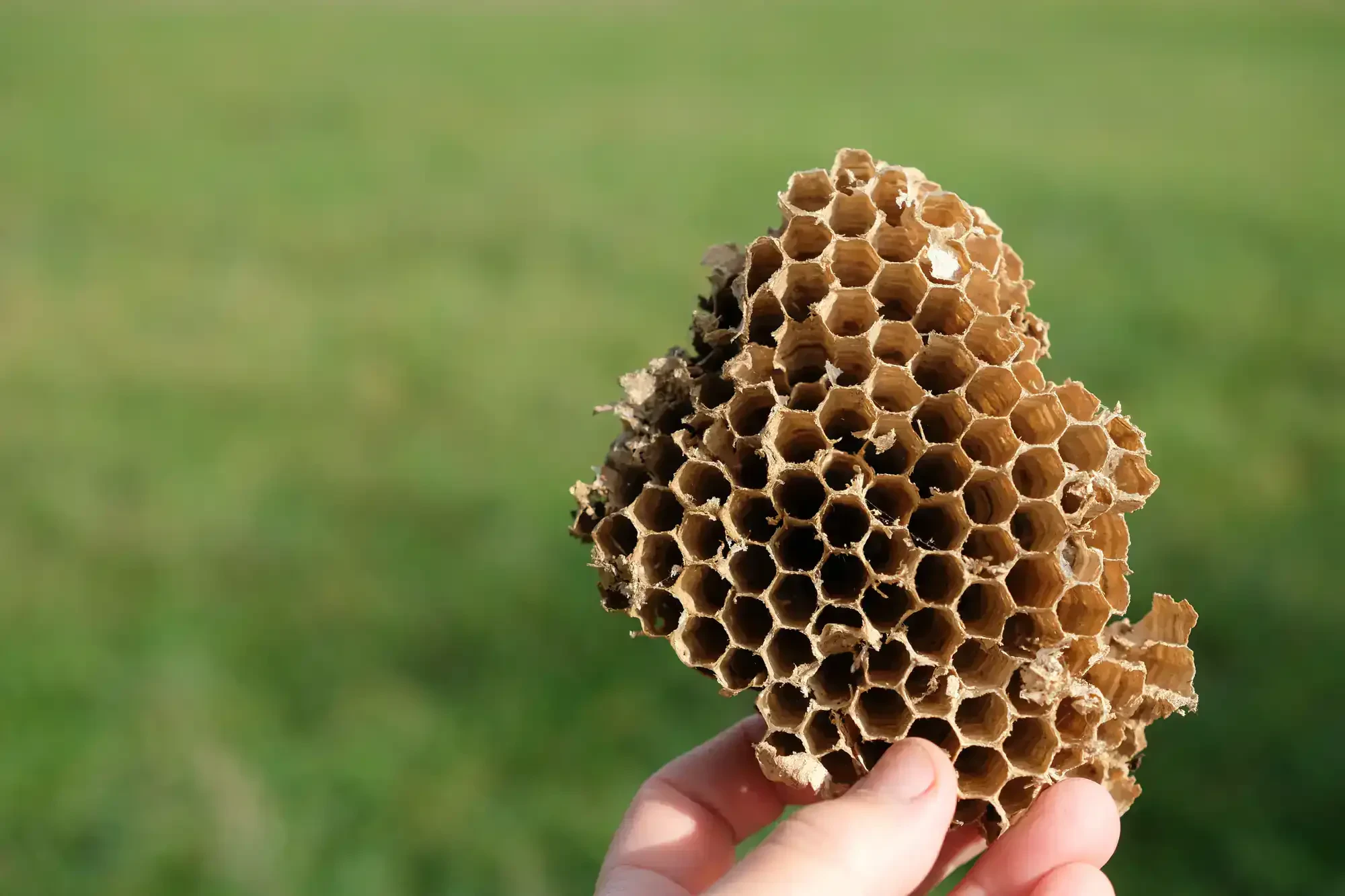
Hear from Our Customers

No more running inside when you spot that gray nest hanging from your eaves. No more canceling backyard gatherings because hornets have claimed your deck as their territory.
When hornet removal is handled right, your kids play outside without fear. Your evening barbecues happen without the constant threat of aggressive stinging insects defending their colony. You use that patio furniture you bought instead of watching it collect dust while hornets patrol overhead.
Professional hornet removal means you get your property back. The buzzing stops. The territorial behavior ends. Your outdoor living spaces become safe again for the people who actually belong there.
We’ve been serving Shiawassee County since 2005. Roger brings 26 years of hands-on experience dealing with Michigan’s unique pest challenges, from the bald-faced hornets that build football-sized nests in Corunna to the aggressive yellow jackets that nest underground in Owosso.
We’re not a national chain rotating college students through your property. You get the same experienced technician year after year—someone who knows Shiawassee County’s pest patterns and understands that late summer brings peak hornet aggression when colonies reach maximum size.
Our integrated pest management training and awards from Angie’s List and Home Advisor represent our commitment to doing this work right. We use science-backed methods that protect your family while actually solving the problem, not just masking it temporarily.

First, we conduct a thorough inspection to locate all nests and identify the specific hornet species. This matters because bald-faced hornets behave differently than European hornets, and treatment timing varies by species.
Next, we schedule removal during optimal times—usually early morning or evening when hornet activity is lowest. Our technicians use professional-grade protective equipment and electronically calibrated application equipment that isn’t available to homeowners.
We apply targeted insecticide treatments directly to nesting sites using specialized dust and liquid formulations that penetrate deep into the colony structure. This eliminates not just the visible workers, but larvae, pupae, and the queen—preventing recolonization.
After the hornets are eliminated, we safely remove the nest and treat surrounding areas with residual products that discourage future nesting. The treatment continues working for months, providing long-term protection even in areas where dust remains undisturbed.

Ready to get started?
Your hornet removal service includes comprehensive elimination of current infestations plus prevention of future problems. We handle everything from aerial nests in mature oaks around Perry to ground-dwelling yellow jacket colonies common in Durand’s sandy soils.
Shiawassee County’s climate creates ideal conditions for multiple hornet species. The Shiawassee River corridor provides the moisture hornets need for nest construction, while our abundant fruit trees and outdoor dining areas attract foraging workers. We understand these local factors and adjust treatments accordingly.
Emergency calls get same-day or next-day response because we know hornet problems can’t wait. When you’re dealing with aggressive insects capable of multiple stings, especially near children’s play areas or main entrances, immediate professional intervention prevents dangerous encounters.
We also provide clear safety recommendations during and after treatment, including keeping family and pets away from treated areas until elimination is complete. Most treatments allow normal property use within hours, but we’ll give you specific guidance based on your situation and the products used.

Hornet stings are significantly more dangerous than most other stinging insects for several reasons. Unlike bees, hornets don’t lose their stinger after attacking, so they can sting repeatedly. Their venom is more potent and delivered in larger quantities, causing more intense pain and higher risk of severe allergic reactions.
When hornets feel threatened, they release alarm pheromones that signal other colony members to attack. This can result in multiple stings from dozens of hornets simultaneously. For people with allergies, even a single hornet sting can trigger life-threatening anaphylactic reactions requiring immediate medical attention.
The risk is highest during late summer when colonies reach peak size—sometimes containing thousands of individuals. At this point, hornets become extremely aggressive in defending their nest and will attack anything they perceive as a threat within a significant radius of their territory.
We strongly advise against DIY hornet nest removal. Most serious stinging incidents occur when untrained people attempt removal without proper equipment, timing, or technique. Store-bought sprays rarely penetrate deep enough into established nests to eliminate the entire colony, and disturbing the nest often triggers mass attacks.
Professional removal requires specialized protective equipment, professional-grade insecticides, and timing based on hornet behavior patterns. We know when hornets are least active, how to approach nests safely, and which treatment methods work for different nest locations and species.
Even seemingly abandoned nests can contain surviving hornets or be reoccupied by new colonies. Without complete elimination of the nest structure and residual treatment of the area, hornets often return to the same location the following season. Professional removal ensures both immediate safety and long-term prevention.
The safest and most effective time for hornet nest removal is early morning or late evening when most workers are inside the nest and activity levels are lowest. We typically schedule treatments between dawn and 9 AM or after 6 PM when hornets are less likely to be foraging or defending aggressively.
Season also matters significantly. Early summer removal is easier and safer when colonies are smaller, but most people don’t notice nests until late summer when they’ve grown large enough to become obvious. By August and September, nests can house thousands of hornets, making professional removal essential.
Weather conditions affect timing too. Cool, overcast days reduce hornet activity, while hot, sunny weather makes them more aggressive. We monitor conditions carefully and may reschedule treatments if weather makes removal unnecessarily dangerous. The goal is complete elimination with minimal risk to everyone involved.
Our hornet removal treatments provide immediate elimination of active colonies plus months of residual protection against reestablishment. The initial knockdown occurs within hours as hornets contact treated surfaces or consume contaminated materials they carry back to the nest.
Residual dust treatments in protected areas like wall voids or under eaves continue killing emerging hornets for six months or longer. This extended protection is crucial because some hornets may be away foraging during initial treatment, and queens from nearby colonies might attempt to establish new nests in attractive locations.
Liquid residual treatments on exterior surfaces typically remain effective for 30-60 days depending on weather exposure. We often combine multiple treatment types to ensure both immediate elimination and long-term prevention. If you see hornet activity between scheduled visits or during the coverage period, we return to retreat at no additional charge until the problem is completely resolved.
Yes, we handle all stinging insect species common to Shiawassee County, including bald-faced hornets, European hornets, yellow jackets, paper wasps, and mud daubers. Each species requires different treatment approaches based on nesting habits, colony size, and behavioral patterns.
Bald-faced hornets build the large gray paper nests you see hanging from trees or building eaves. Yellow jackets often nest underground or in wall cavities and are extremely aggressive when disturbed. Paper wasps create smaller, open-comb nests under protected areas. We identify the specific species during inspection and customize treatment accordingly.
We also distinguish between harmful stinging insects and beneficial pollinators like honey bees. When we encounter bee colonies, we recommend relocation rather than elimination whenever possible, often connecting property owners with local beekeepers who can safely relocate hives. This approach protects important pollinators while addressing legitimate safety concerns about stinging insects near homes and play areas.
If you discover a hornet nest on your property, the most important thing is to avoid disturbing it and keep family members and pets away from the area. Don’t attempt to remove it yourself, spray it with household products, or throw objects at it—these actions typically trigger aggressive defensive behavior from the entire colony.
Mark the location from a safe distance and contact us for professional removal. Try to observe the nest from indoors or at least 20 feet away to note the size, exact location, and level of hornet activity. This information helps us plan the safest and most effective removal approach.
If someone gets stung and shows signs of severe allergic reaction—difficulty breathing, widespread swelling, rapid pulse, or dizziness—seek immediate medical attention. For normal sting reactions, remove the stinger if visible, clean the area, and apply ice to reduce swelling. Multiple stings or stings near the face and neck warrant medical evaluation even without obvious allergic symptoms.